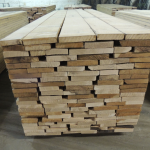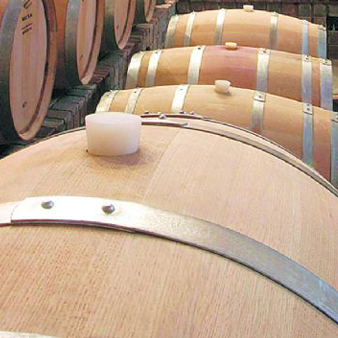White Oak
• Quercus spp
• Other names: Northern white oak, Southern white oak
White oak is similar in colour and appearance to European oak. The sapwood of American white oak is light coloured and the heartwood is light to dark brown. White oak is mostly straight grained with a medium to coarse texture, with longer rays than red oak. White oak therefore has more figure.
White oak machines well, nails and screws well although pre-boring is advised. As it reacts with iron, galvanised nails are recommended. Its adhesive properties are variable, but it stains and polishes to a good finish. The wood dries slowly and care is needed to avoid checking. Due to its high shrinkage, it can be susceptible to movement in performance.
A hard and heavy wood with medium bending and crushing strength, low in stiffness, but very good in steam bending. Southern white oak is faster grown with wide growth rings, and tends to be harder and heavier.
• Specific Gravity: 0.68 (12% M.C.)
• Average Weight: 769 kg/m3 (12% M.C.)
• Average Volumetric Shrinkage: 12.6% (Green to 6% M.C.)
• Modulus of Elasticity: 12,273 MPa Hardness: 6049 N
* Values for Q. alba
The heartwood is resistant to decay, extremely resistant to preservative treatment, and the sapwood is moderately resistant to treatment.
• USA: Readily available but not as abundant as red oak.
• Export: Very widely available in lumber and veneer, in a full range of qualities and specifications. The most important hardwood export.
• Construction.
• furniture
• flooring
• architectural joinery
• exterior joinery
• mouldings
• doors
• kitchen cabinets.
• panelling
• railway sleepers
• timber bridges
• barrel staves
• coffins
• caskets
White oak can vary in colour, texture, characteristics and properties according to the growing region. It is therefore recommended that users and specifiers work closely with their suppliers to make sure the wood they order is suited to their specific needs. Northern and Southern may be sold separately.
















 Ask for our FSC® certified products
Ask for our FSC® certified products


